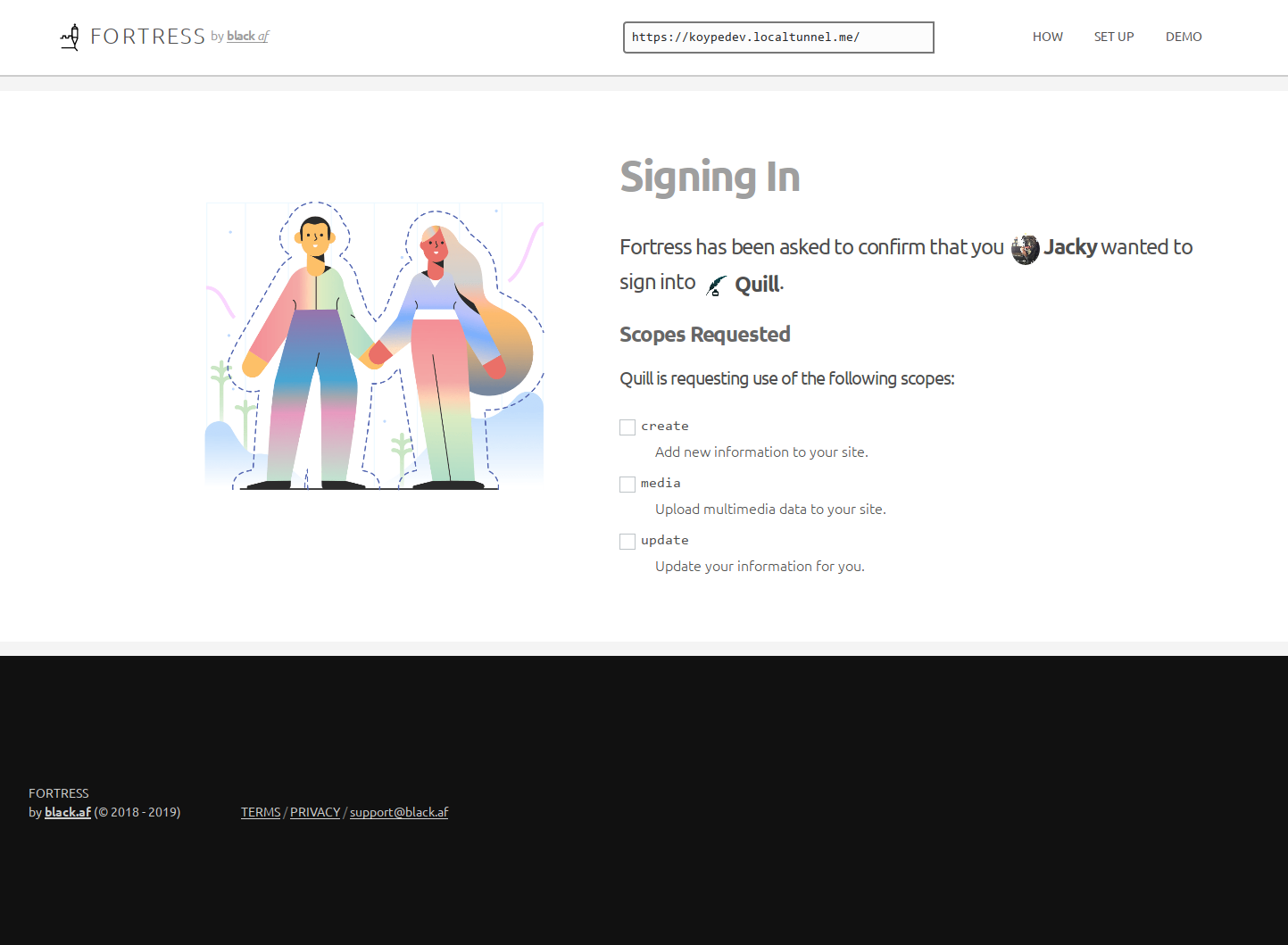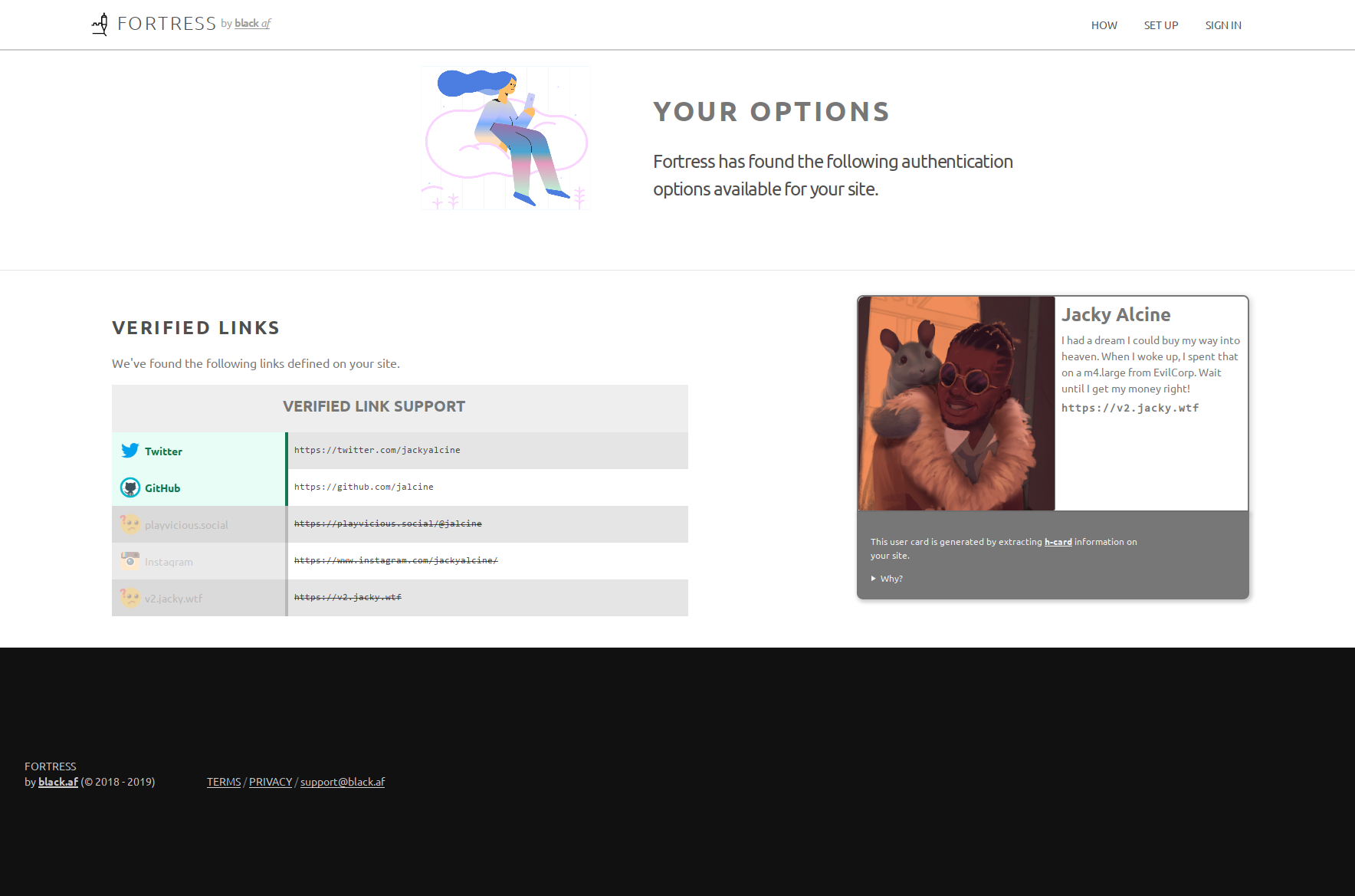Fortress
Fortress is an IndieAuth provider and consumer service that allows one to have drop-in support to use their site as an identity on the Web. This project is being worked on by Jacky Alciné as soon as Koype reaches its initial release.
Features
- Sign in support using IndieAuth
- Generating placeholder profile URIs for non-IndieWeb users (see Fortress#Shadow_Profiles).
- Provide out-of-band authentication (see Fortress#Out_of_Band_Authentication).
Shadow Profiles
In order to support identification of people who don't have IndieWeb sites but are requested to have access to one's site (in the case of private posts), Fortress aims to generate short-lived h-card powered pages that can be used to help people hold onto a temporary identifier. They come with a few quirks:
- They expire after a month after their creation
- They only expose only one identity at a time
Out of Band Authentication
This occurs by associating a compatible device with your identity on Fortress. This way, you can use that device as a way to confirm your identity as another level of security. This will only be available to people who expose Fortress as their site's IndieAuth provider or add hooks into their IndieAuth flow that allow for out of band authentication support.
There's an assumption of support of pre-shared keys here. I _think_ some other sort of logic can work here; something that can be used out of the band by both the authorizing IndieAuth server and a client device.
TODO: There's a more common term for this (probably just MFA / two-step verification) - rename to be that.
Device Registration Flow:
- Person visits Fortress
- They sign into the dashboard using their site
- They confirm that their site is using Fortress as their IndieAuth provider
- ... click on "Add Device"
- A separate application is in their possession (desktop, mobile, another web-app)
- They enter the specified host of the IndieAuth provider they'd like to use in a separate app (defaults to fortress.black.af)
- The app tells the IndieAuth provider information about it and sends a public cryptographic key (the type doesn't matter)
- Fortress tells the app its public key (doesn't matter what kind)
- Fortress presents a one-time code
- They enter the one-time code into the app (or scan, or click link)
- The device tells Fortress the code with a signed message, signed using the private key
- Fortress confirms the signatures and sends the app a confirmation as a signed message
- Fortress reports to the user that the app is synced
- App should report and store information about this app being synced.
Authorization Request:
- Fortress shows the request to the user with instructions
- The user opens their app
- It's suggested that things like websockets or event emitters are used to have the app appear quickly
- The app displays a challenge
- On confirmation, send signed confirmation of the message
- On rejection, send signed rejection of the message
- The message will last as long as noted on setup (maybe like 10 minutes?)
- Fortress now continues the authentication flow
Screenshots
See Also
- IndieAuth
- https://fortress.black.af
- https://playvicious.social/@jalcine/101442636093026863
- "Here's https://jacky.wtf under that test." @jalcine January 19, 2019
- https://playvicious.social/@jalcine/101679068023639662
- "Distributed sign in that'd help facilitate nomadic identities on the Web by way of #Fortress :)" @jalcine March 2, 2019


